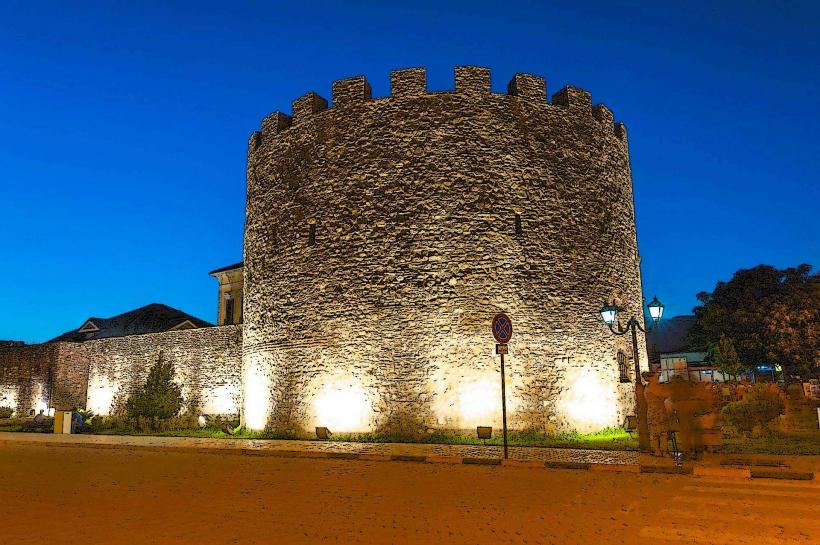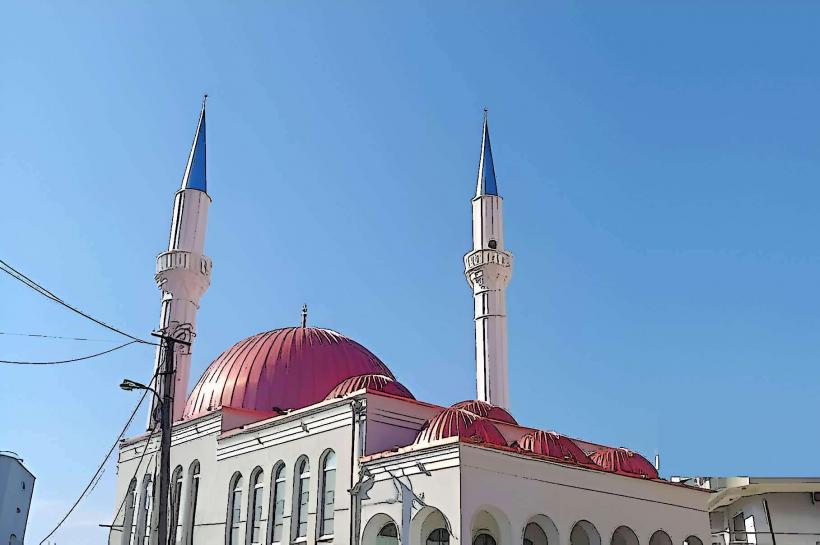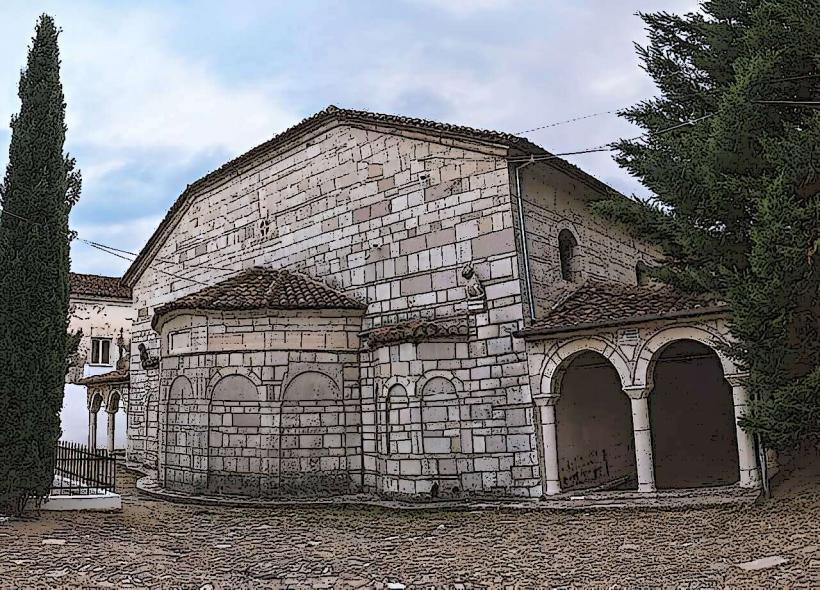Information
City: ElbasanCountry: Albania
Continent: Europe
Elbasan: Overview and Characteristics
Elbasan is a city located in central Albania, known for its historical significance, cultural heritage, and strategic location. It lies on the banks of the Shkumbin River, serving as a commercial and industrial hub. Elbasan has a rich history, spanning from the ancient Illyrian period to modern-day Albania. The city is an important center for local industries, agriculture, and education, with a growing cultural tourism sector.
Geography and Climate
- Location:
- Elbasan is situated approximately 50 kilometers (31 miles) inland from the Adriatic Sea, lying to the southeast of Tirana, Albania’s capital.
- The city is set in a valley, surrounded by hills and mountains, making it a scenic location.
- Climate:
- Elbasan has a Mediterranean climate, with hot, dry summers and mild, wet winters.
- Summer temperatures can reach around 30°C (86°F), while winter temperatures hover around 10°C (50°F), occasionally dropping lower during cold spells.
History
- Ancient and Roman Period:
- Elbasan was founded as an Illyrian settlement and later became a significant Roman city, known as Möesia. The Romans established the town as a strategic military post.
- Elbasan is home to the remains of a Roman road, Via Egnatia, which linked the Adriatic Sea with Byzantium (modern-day Istanbul), passing through the town.
- Ottoman Era:
- Elbasan was under Ottoman rule from the late 14th century until the early 20th century. During this period, the city became a major administrative and trade center.
- The Ottomans built several important structures in Elbasan, including mosques, bridges, and fortifications, many of which still stand today.
- Modern Era:
- Elbasan became part of Albania after it declared independence from the Ottoman Empire in 1912. The city underwent significant industrial development in the 20th century, particularly under the communist regime.
- Today, Elbasan is a major center for industry, agriculture, and education in Albania.
Demographics
- Population:
- Elbasan is one of the largest cities in Albania, with a population of around 80,000 people.
- Ethnic Composition:
- The majority of the population is Albanian, with a small minority of other ethnic groups.
- Language:
- Albanian is the primary language spoken in Elbasan.
- Religion:
- The city is religiously diverse, with both Muslim and Christian populations. The majority are Muslim, predominantly of the Sunni branch, though there are significant Christian communities, both Catholic and Orthodox, reflecting the city’s historical religious influence.
Economy
- Industry:
- Elbasan is known for its heavy industry, especially in the fields of metallurgy and cement production. The Elbasan Ironworks has been a key part of the city’s industrial base for decades.
- The city also has a significant agricultural sector, producing crops like wheat, vegetables, and fruits, particularly in the fertile plains around the Shkumbin River.
- Trade and Commerce:
- Elbasan is a commercial hub for the surrounding region, with a busy marketplace and several shopping districts.
- Tourism:
- While tourism is not as developed as in other Albanian cities, Elbasan is gradually gaining attention for its historical sites, including Ottoman-era structures, and its proximity to natural attractions like lakes and mountains.
Urban Landscape
- Architecture:
- Elbasan’s architecture is a mix of Ottoman, medieval, and modern influences. The city features Ottoman-style mosques and bridges, as well as Roman ruins.
- The Elbasan Castle, with its walls and gates dating back to the 15th century, is one of the city’s key historical structures.
- Modern buildings and industrial complexes also define the cityscape, particularly around the outskirts.
- Neighborhoods:
- The city center is a blend of old and new, with traditional houses and modern amenities. The Old Bazaar area retains its Ottoman charm, while newer residential and commercial zones have been developed in recent decades.
Culture and Lifestyle
- Cultural Influence:
- Elbasan has a strong cultural heritage, with influences from its Illyrian, Roman, and Ottoman past.
- The city is home to several cultural institutions, including theaters, museums, and galleries, which help preserve its diverse history.
- Cuisine:
- The cuisine in Elbasan reflects the wider Albanian culinary tradition, with an emphasis on fresh, locally sourced ingredients.
- Specialties include byrek (savory pastries), tave kosi (a dish made with lamb and yogurt), and various stews and grilled meats.
- Lifestyle:
- The lifestyle in Elbasan is relatively relaxed, with an emphasis on family and community. People spend time at local cafes, markets, and social events.
- Traditional cultural events and festivals, such as Elbasan's Carnival and various religious celebrations, play a key role in local life.
Natural Attractions
- Shkumbin River:
- The Shkumbin River, which flows through Elbasan, is a central feature of the landscape and offers opportunities for fishing, boating, and nature walks.
- Tomorr Mountain:
- Located to the south of Elbasan, Tomorr Mountain is a popular destination for hiking and nature enthusiasts. It also holds religious significance as a site of pilgrimage for local Orthodox Christians.
- Lagoons and Forests:
- Elbasan is surrounded by natural areas such as forests and lagoons, which offer additional opportunities for outdoor activities and exploration.
Landmarks and Heritage Sites
- Elbasan Castle:
- A major historical landmark, this 15th-century castle once served as a military stronghold. It features large stone walls and several gates, with views of the surrounding city and countryside.
- Roman Road (Via Egnatia):
- The remains of the ancient Roman road that once linked Byzantium to the Adriatic coast pass through Elbasan. Sections of the road can still be seen in and around the city.
- King’s Mosque:
- This Ottoman-era mosque, built in the 16th century, is an important religious and architectural landmark in Elbasan.
- The Old Bazaar:
- The old market area of Elbasan retains its Ottoman-style architecture and is a focal point for the city’s commerce and tourism.
- The Ethnological Museum:
- Housed in a traditional Ottoman-era house, the museum showcases the history, culture, and traditions of Elbasan and the surrounding region.
Infrastructure
- Transportation:
- Elbasan is well-connected to the rest of Albania by road. It lies along the Egnatia Highway, which links Albania to Greece and the wider Balkan region.
- The city has a bus station with services to Tirana, as well as other parts of Albania.
- Elbasan is also accessible by train, with the railway line connecting it to Tirana and other cities.
- Urban Development:
- The city has undergone significant development in recent decades, particularly in terms of infrastructure and housing. Modern roads, public buildings, and residential areas have been constructed, though the city has managed to retain much of its historical character.
- Utilities and Services:
- Elbasan has all the necessary amenities, including healthcare, education, and shopping. It also offers a wide range of restaurants, cafes, and entertainment options.
Challenges
- Industrial Pollution:
- Elbasan has long been an industrial hub, but this has led to pollution concerns, particularly related to the city’s heavy industry and cement production.
- Urban Sprawl:
- With population growth and increasing urbanization, Elbasan faces challenges in managing urban sprawl and preserving its historical sites.
Conclusion
Elbasan is a city with a rich history and a blend of ancient, medieval, and modern influences. From its Roman roots to Ottoman heritage and modern industrial base, Elbasan is a city of contrasts, offering visitors a unique opportunity to explore Albania’s past and present. With its historical landmarks, scenic natural surroundings, and growing cultural scene, Elbasan is increasingly becoming an important destination for those interested in Albania’s cultural and historical heritage.





